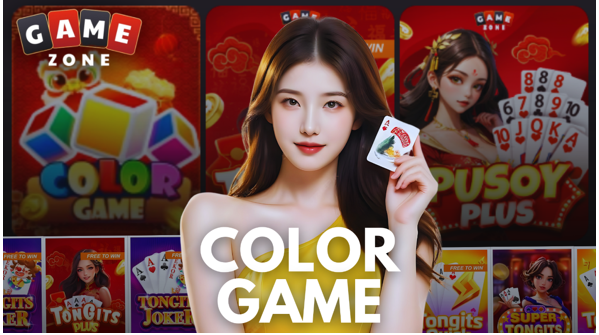The Filipino carnival, or “perya,” is a kaleidoscope of sights, sounds, and experiences that capture the essence of local culture and community spirit. Among the myriad attractions that dot these festive grounds, one game stands out as a perennial favorite: the Perya Color Game. This iconic booth has become a staple of the perya experience, drawing crowds with its simple yet exhilarating gameplay and the promise of both entertainment and potential winnings. In this article, we’ll delve deep into the world of the Color Game, exploring its appeal, mechanics, and the cultural significance it holds in the Filipino carnival landscape.
The Allure of the Color Game
At first glance, the Color Game booth might seem like just another carnival attraction. However, its enduring popularity and the fervent enthusiasm it generates among players tell a different story. The game’s allure lies in its perfect blend of simplicity, chance, and the potential for instant gratification.
The Thrill of Chance
At its core, the Color Game is a game of chance. The randomness of the dice rolls means that winning is never guaranteed, regardless of a player’s experience or strategy.
This aspect of the game taps into the human psyche’s fascination with risk and reward. The brain’s reward system is activated by the
anticipation of a potential win, releasing dopamine and creating a sense of excitement. This neurological response explains why players often find themselves unable to resist “just one more” roll of the dice.
How the Color Game Works
The mechanics of how to play the Color Game are straightforward, contributing to its widespread appeal. Players place bets on one or more colors on a board, typically featuring six different colors. The dealer then rolls three dice, each face painted with one of the six colors.
If one of the colors a player bet on comes up on any of the three dice, they win. The payout depends on how many of the rolled dice match the player’s chosen color(s). A single match usually pays
even money, two matches offer a higher payout, and the rare occurrence of all three dice matching a player’s chosen color results in the highest payout.
The Social Aspect of the Color Game
While the game itself is engaging, the social environment it creates is equally important to its enduring popularity. The Color Game tricks booth often becomes a gathering point in the carnival, where friends and strangers alike come together to share in the excitement.
Building Community
The shared experience of playing the Color Game fosters a sense of community among carnival-goers. Players often strike up
conversations, share strategies (however futile they may be in a game of pure chance), and commiserate or celebrate together. This social interaction adds another layer of enjoyment to the game, making it more than just a solitary pursuit of winnings.
A Microcosm of Filipino Culture
In many ways, the Color Game booth serves as a microcosm of Filipino culture. The Filipino people are known for their resilience, optimism, and ability to find joy in simple pleasures. These traits are perfectly encapsulated in the Color Game experience. Players return time and again, undeterred by losses, always hopeful for that next big win.
Moreover, the game reflects the Filipino love for social gatherings and shared experiences. The carnival itself is a manifestation of
This cultural characteristic and the Color Game booth stand as one of its most social attractions.
The Psychology Behind the Color Game’s Appeal
The Color Game’s popularity can be partly attributed to several psychological factors that make it particularly appealing to players.
The Illusion of Control
Despite being a game of pure chance, many players develop superstitions or “strategies” they believe will increase their odds of winning. This illusion of control, while objectively unfounded,
enhances the player’s engagement with the game and can make the experience more enjoyable.
Near Misses and the Gambler’s Fallacy
When a player’s chosen color appears on one or two dice but not all three, it creates a sense that they were “close” to winning. This near-miss effect can encourage continued play, as players feel they’re on the brink of success.
Similarly, the gambler’s fallacy—the erroneous belief that past events influence future outcomes in random processes—often comes into play. Players might believe that a color is “due” to come up after a string of losses, despite each roll being an independent event.
The part of the Color Game in Carnival Economics
From a profitable perspective, the Color Game plays a pivotal part in the fiscal ecosystem of Filipino festivals. For festival organizers, it’s a dependable source of profit, attracting a steady stream of players throughout the event. For players, while winning plutocrat is really a motivating factor for numerous actors, the true value of the Color Game lies in the experience itself.
The excitement of placing a bet, the suspense of staying for the bones to settle, and the fellowship formed with fellow players each contribute to a pleasurable and memorable festival experience.
Whether one walks down with prizes or not, the fun and excitement of sharing in this iconic perya game are prices in themselves.
Conclusion: More Than Just a Game
In substance, the Color Game embodies the spirit of the Filipino perya—a place where joy, chance, and community meet to produce lasting recollections and moments of pure, unalloyed fun. Its enduring fashionability is a testament to its capability to offer more than just the possibility of winning prizes. The Color Game is an artistic criterion, a social lubricant, and a source of participated guests.
It represents the Filipino capability to find joy in the moment, to bond with others over participated experiences and bummers, and to return time and again with undiminished enthusiasm. As long as there are festivals in the Philippines, the Color Game will probably continue to hold its place as a cherished magnet. Its mix of simplicity, excitement, and social commerce makes it more than just a game—it’s a definitive part of the Filipino festival experience, a various thread in the vibrant shade of Filipino culture.

